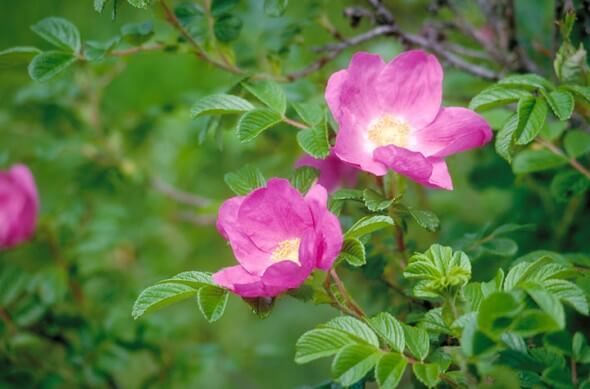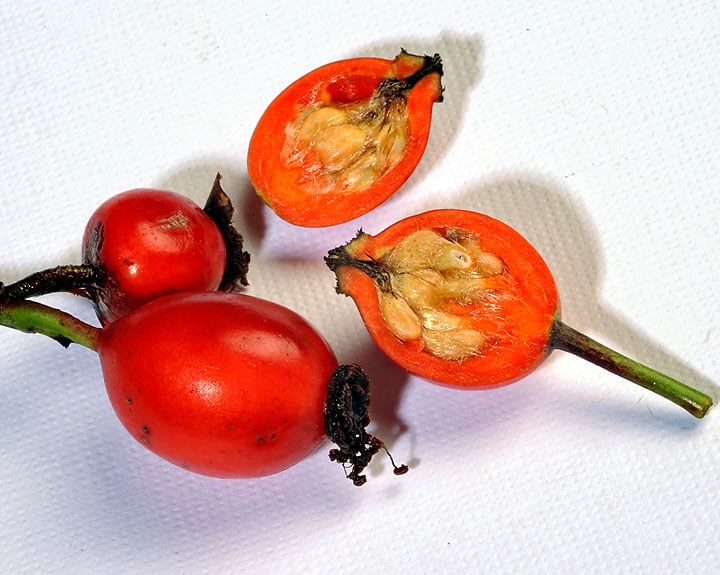
During World War II the Nazis blockaded English ports so they could not import citrus. As a result many children began to show signs of Vitamin C deficiency, the predecessor to scurvy. Another source of the vitamin had to be found so all local plants were tested. Fruits known as hips from a rural rose bush proved to be packed with vitamins. Ounce for ounce this rose and all other rose fruit contain more Vitamin C than citrus. From the quantities of fruit gathered far and wide, a potent vitamin rich syrup was made that saved the children’s health.
If you’re gardening for self sufficiency, you must have at least one good organically grown rose that bears large hips. The best species for fruit production is Rosa rugosa, known as the Japanese rose. These produce an annual crop of beautiful pink flowers each year followed by fat, luscious fruit.
Rugosas are tough as nails, with foliage that resists the usual fungal diseases that plague other roses. It’s far more cold hardy too, for easy care in northern climates. Rugosas can be found all along the eastern seaboard because the uniquely thick leaves retain moisture despite persistent winds. The whole plant is remarkably tolerant of salt air and alkaline soils too.

Rosa rugosa is a long time favorite for rural hedging because the root systems spread out and send up new sprouts. This helps a single individual to spread into a large patch or dense hedge that yields plentiful flowers and fruit. It’s also easy to propagate free copies by simply digging up a piece of root with its sprout attached and transplant to a pot of Black Gold All Purpose Potting Soil.
Hips form in summer and ripen to red-orange in the fall. They are astringent until fully ripe, then become sweet enough to eat off the bush. Once the hips have been exposed to a frost, it’s easier to prepare them.
Use minced rose hips to add raisin-like flavor to baked goods with a bonus of high vitamin content. They also make a famously healthy rose hip jelly for ideal holiday gifts. Fresh brewed rose hip tea with honey is perfect for treating colds or flu.

Whether you grow your rose hips, gather them from the wild or out of other peoples’ gardens, you’ll want to preserve them for future use. First pick the hips, wash well, then peel the flesh away from the seeds clustered at the center. These seeds and attached hairs must be discarded so you’re left with clean flesh. You can also sow them into Black Gold Seedling Mix to create an entire hedge of new plants.
To freeze fresh rose hips, cover a cookie sheet with tin foil and scatter the chunks of fresh rose hips so none are touching. Freeze, then remove from the foil and place in conveniently sized Ziploc bags to store in the freezer until needed.
To make rose hip tea, add a few tablespoons of clean fresh or frozen flesh to a sauce pan of boiling water, then turn down the heat to simmer gently for 10 minutes. The resulting tea will be acidic tasting and rich in antibacterial properties. It will also be chock-full of natural vitamins that strengthen the immune system.
If you’re striving for greater self sufficiency, add a rugosa to your home landscape and let it grow large and flower much. Then when winter cold and flu season rolls around after medicinal herbs have died back, you’ll have a storehouse of organically grown hips from your own Japanese rose.
